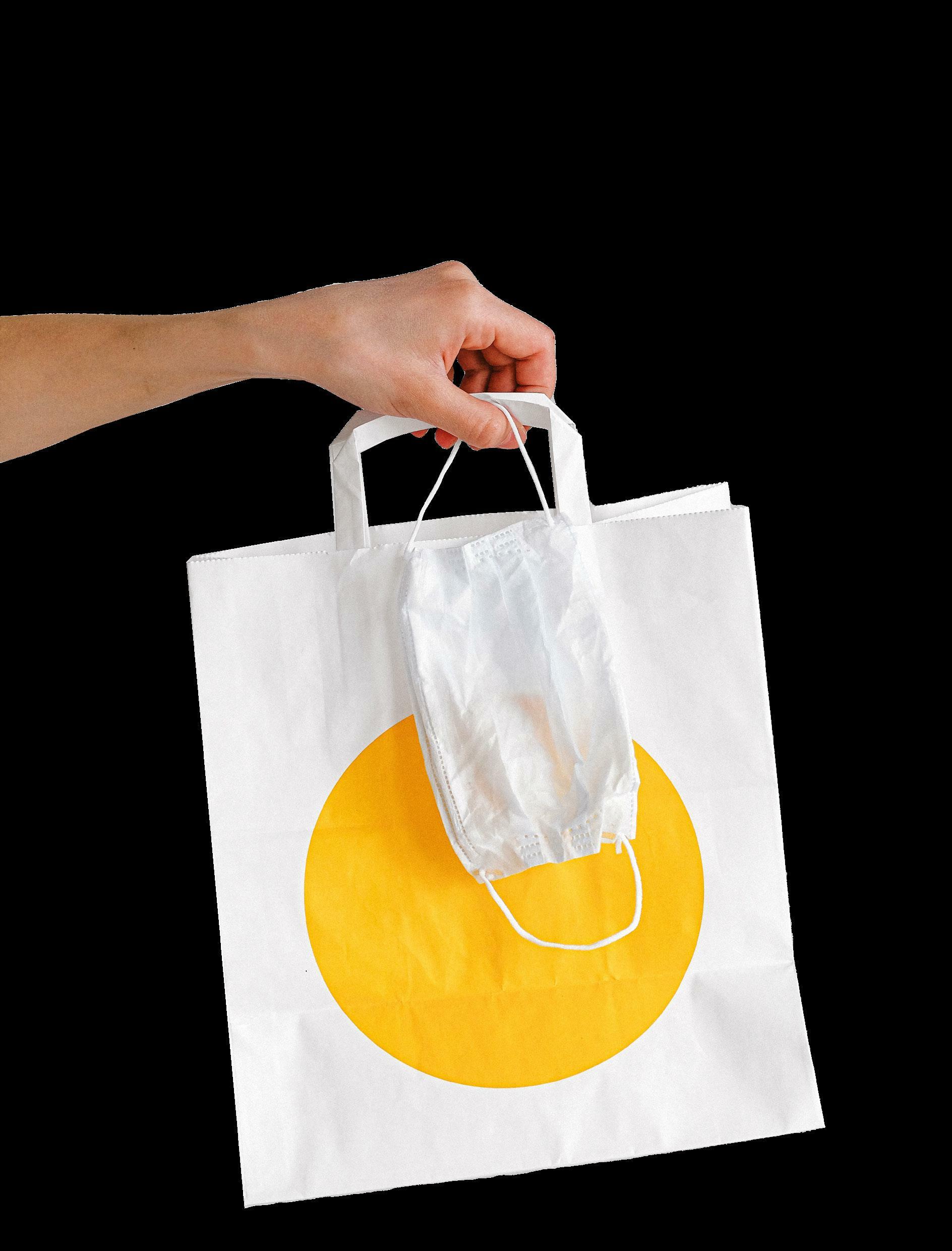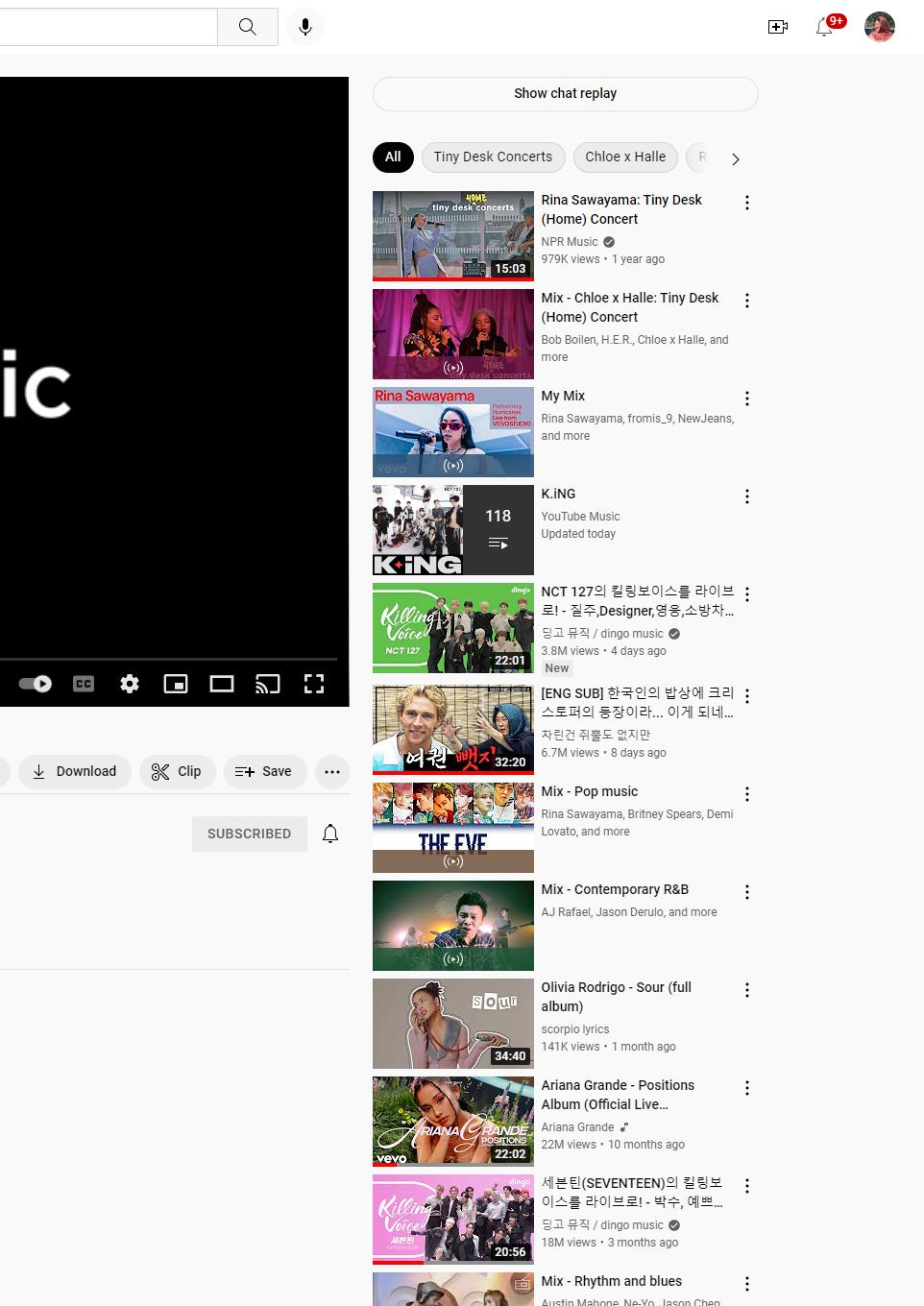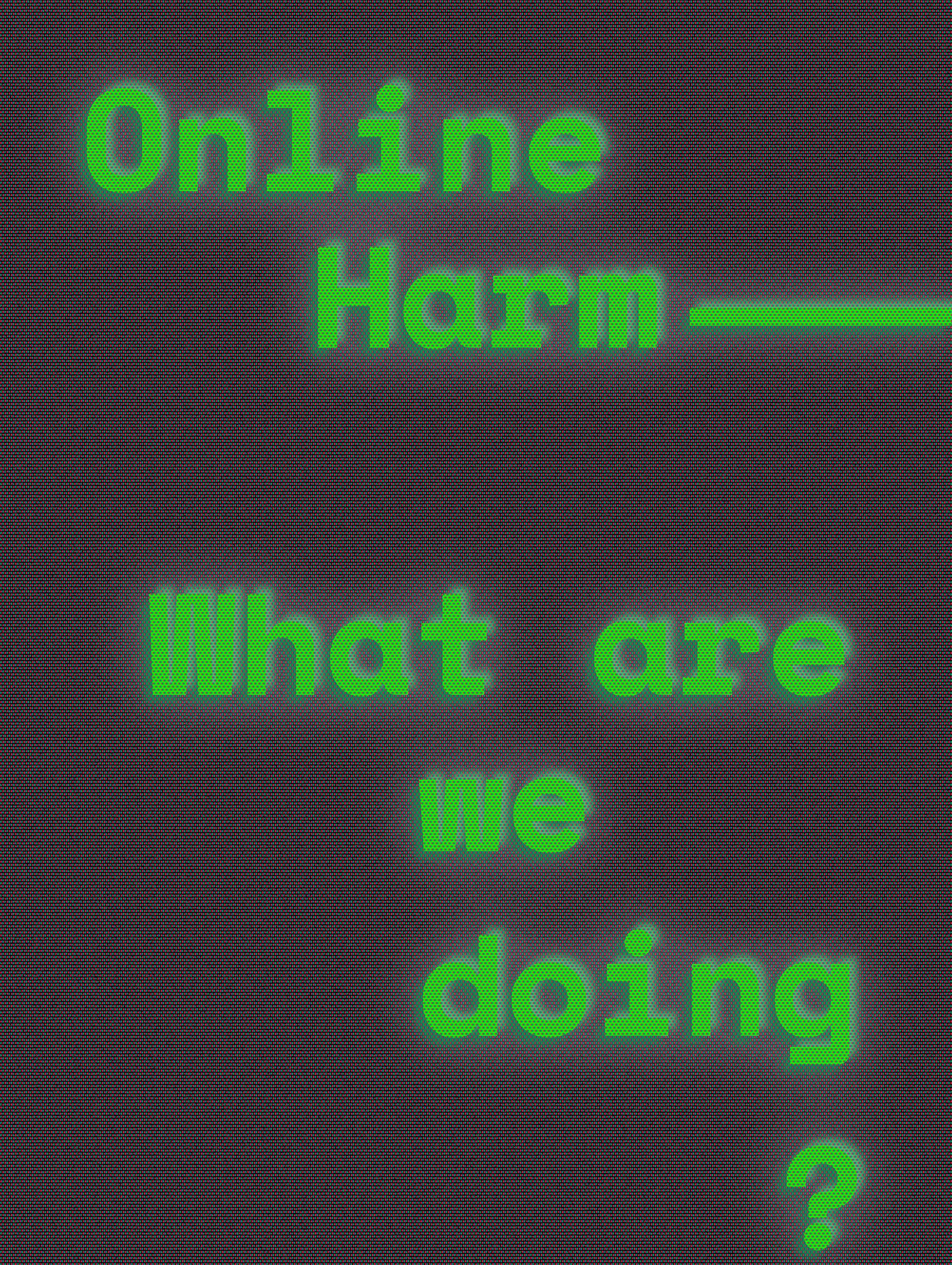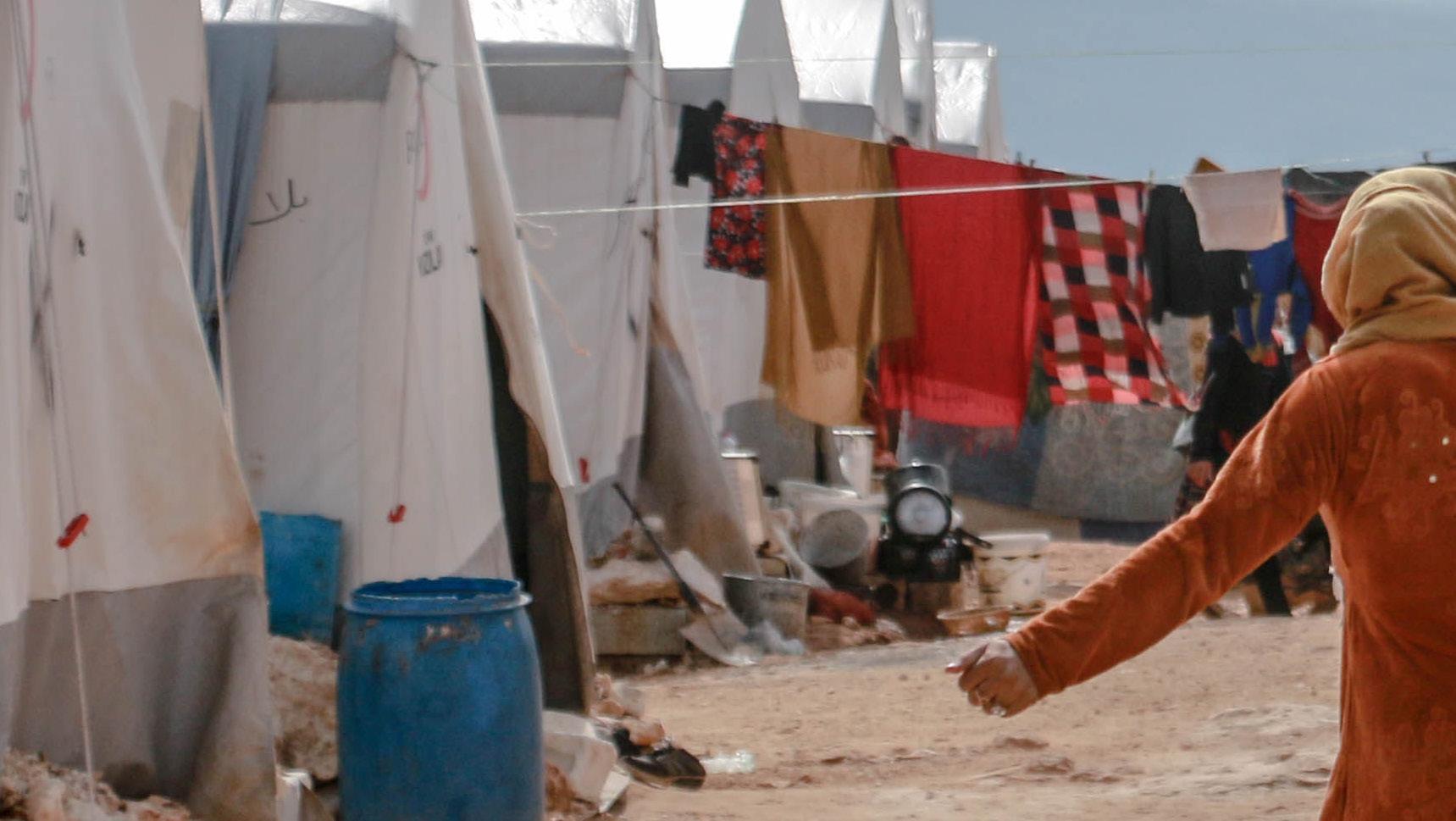The Laws that Shape Us





This publication is copyright. Except where permitted under the Copyright Act, no part of this publication may form or by any means (electronic or otherwise) be reproduced, stored in a retrieval system or transmitted by any process without specific written consent of the UTS Law Students’ Society. Enquiries are to be addressed to the publishers.
The UTS LSS acknowledges the Gadigal People of the Eora Nation, the Boorooberongal people of the Dharug Nation, the Bidiagal people and the Gamaygal people upon whose ancestral lands our university stands. We would also like to pay respect to the Elders both past and present, acknowledging them as the traditional custodians of knowledge for these lands.
Unless provided by the designers or commissioned specifically for the purpose of this publication, uncredited photographs have been sourced from royalty-free distributors, licensed under Creative Commons Zero.

All expressions of opinion published in the TFB are not the official opinion of the UTS Law Students’ Society unless expressly stated. The UTS Law Students’ Society accepts no responsibility for the accuracy of any opinions or information contained herein and readers should rely on their own enquiries to make decisions in their own interest.
Wild West of Privacy Law: Exploring How Australia’s Lack of Digital Protection Laws have Failed Society’s Most Vulnerable


Welcome to the second volume of The Full Bench for 2022, brought to you by the incredible UTS LSS Education Portfolio!
This edition of the publication, ‘The Full Bench: The Laws That Shape Us’, is a thought provoking collection of student submissions which recognise that the law is capable of both restriction and providing freedoms, requiring constant reform and review to ensure that they are serving an appropriate purpose in a contemporary world. This particular collection will navigate the role of the law in impacting the lives and rights of different groups and communities, for example through Native Title and the legalisation of marriage equality.
This wonderful publication could not have been achieved without the efforts of the hugely talented team who have dedicated considerable time to putting it together. Congratulations and thank you to Alyssya Warty-Hasan, our Education (Publications) Director, and Anthony Ayoub, our Vice-President (Education), for their flawless coordination of all the behind-the-scenes work of a publication of this magnitude. I would also like to thank our Education (Publications) Subcommittee for their dedication and teamwork.
Finally, thank you to all of our law student contributors for their incredible insights.
I hope you enjoy reading this volume of The Full Bench as much as I did.


Society is continually shaped by defining moments in history.
It is the ultimate goal of society to ensure the law remains reflective of renewed societal standards. Whether this is extending the right to vote or legalising same-sex marriage, the role of the community is fundamental in catalysing law reform. This edition of The Full Bench will explore how the legal system has sought to transform its citizens’ lives, resulting in both positive and negative change.
I would like to extend an enormous thank you to our Education (Publications) Director, Alyssya Warty-Hasan. Alyssya’s commitment to The Full Bench is flawless. Her immense dedication and behind-the-scenes efforts have allowed her to steer an insightful publication of this magnitude.
Special thanks also go to our incredible Education (Publications) Subcommittee, who run a seamless operation to ensure our publications are at a gold standard. I would like to thank the UTS LSS President, Erika Serrano, who remains a constant beam of support.
Finally, to our contributors who make this fantastic publication possible. Their sincere interest in ‘The Full Bench’ allows the UTS LSS to showcase their fascinating and insightful perspectives to the broader UTS Law community.
What are you waiting for? Enjoy your reading!

 by Alyssya Warty-Hasan
by Alyssya Warty-Hasan
I am excited to share The Full Bench II 2022: The Laws that Shape Us.
The Laws that Shape Us is a collection of student journals that explores influential laws that have changed the way we live - both positive and negative. These laws range from the 1967 referendum of the Australian Constitution, to how the Australian Consumer Law has impacted our everyday lives as consumers. Each essay has been written with passion and dedication.
As future legal practitioners, we must be aware of the laws that build our society. I encourage you to reflect on what society would be like if these laws had not been introduced, and also, whether or not these laws are still reflective of our values as a society.
I would like to thank our contributors for their hard efforts in writing such insightful pieces. Additionally, I would like to thank our Education (Publications Subcommittee), and our talented designer, Navira Trimansyah, for their incredible efforts in helping bring this publication to life. Finally, I would like to thank Erika Serrano, President, and Anthony Ayoub, Vice-President (Education), of the UTS LSS, for their ever-present guidance and support.
I hope you enjoy reading The Full Bench II: The Laws that Shape Us.
Priscilla Spalding Bachelor of Business/Bachelor









Consumer Law is one of the pillars of transactional morals and maintaining the rights of business owners and stakeholders. The law regulates the relationship between businesses and consumers and how their exchanges operate. Each exchange is contractual in nature and binds both parties to a duty to uphold a standard of legally defined morality.1 Ethical frameworks underpin the law of consumer goods.2 Businesses that have a strong ethical reputation also have loyal customers. Having fair laws in the business world supports our economy and overall lifestyle enjoyment. In Australia, COVID-19 has catalysed reforms which have deepened the importance of regulating business operations.
The laws which regulate business transactions were created with the intent of ensuring fairness. The same morals that are applied in the business world also arise in other areas of life, such as the complexities associated with trademarks. Jeremy Sheff investigates the world of consequentialism and trademarks and the impact they have in a world where we are exposed to the proliferation of entrepreneurs and their intellectual propertya phenomenon that is growing exponentially.3 These responses are in the interest of ‘prioritising protection of consumers as vulnerable prorate over business self-interest and consumer self-reliance’ the importance of regulating business operations.4



The nature of consumer ethics within business law means ‘moral principles and standards will influence the way that individuals use and dispose of goods and services’.5 Moreover, these ethical changes are also adapted to ‘legal reforms to address the potential pitfalls of the on-line environment’.6 While this is a great consideration particularly within the context of a constantly evolving business environment, it is necessary that lawmakers and judicial bodies uphold laws which are read and interpreted in a purposive manner suited to the way consumerism has changed through technology.7 The Australian Competition and Consumer Commission (ACCC) standards reflect changes in the way that businesses are regulated, which has a negative and positive influence not only on businesses, but also on society and the environment.8
Protecting consumers is at the centre of Australian society and the regulation of business conduct which is legally enforced. The ACCC is a Commonwealth statutory authority that investigates business misconduct and consumer complaints.9 This authority monitors complaints arising from consumer laws and other related issues. This also demonstrates Australia’s commitment to ensure that businesses are ethical. Such a response creates a standard of behaviour and demonstrates that unfair conduct by businesses will not be tolerated. The Australian Competition and Consumer Act 2010, sets out the legislation which endeavours to uphold consumer interests, and the ACCC is a step beyond this. The ACCC is currently investigating issues with flight delays which customers have complained are being caused by Qantas.10 This commitment to investigate ongoing issues within the business world on a case-by-case basis in other circumstances, reflects that ethical conduct standards remain no matter the changes.

Addressing complaints and issues relating to consumers and businesses is a continuous ethical implication. A paper discussing 3D printing and its rise in the market, presents an interesting exploration of the concept of consequentialism.11 It also reveals that the introduction of new products and new technology requires sufficient legislative protections to cover unforeseen issues connected with the product. The paper also argues that even if there are no laws, there remains an underlying social ethic which must be upheld. However, while there is an expectation that consumers have an ethical awareness about how their rights operate in transactions involving new products, not everyone understands the reasons for the law and why it operates the way it does.12 Furthermore, depending on what a 3D printer produces may also vary person to person, the target market of the seller and the personality or type of individual who makes the purchase.
Australian Consumer Laws are a moderator for the consumer and business relationship. They are also a structured guide for upholding honest and ethical conduct between parties involved in exchange. Without these rules in place, transactions would be far more complex. By ensuring that formal relationships involving businesses are managed, there is more trust built between all parties they engage with. The moral standards embedded in the way that people conduct themselves because of laws transfer into other areas of life and thus maintain our standards as responsible consumers. While also promoting justice and fairness by conduct no matter the size of a transaction or number of people involved.
1 Jeremey N Sneff. Marks Morals and Markets (2013) Stanford Law Review 65 (4), 761.
2 Business Queensland, legal and ethical selling (2020). Queensland Government
3 Sneff (n 1).
4 Protecting the values of consumer law in the digital economy: the case of 3D-printing digital Revolution - Challenges for Law. Data Protection, Artificial Intelligence, Smart Products, Blockchain Technology and Virtual Currencies (in press).
5 Syed Masroor Hassan, Zillur Rahman, and Justin Paul. Consumer ethics: A review and research agenda (2021). Psychology and Marketing.
Ibid.
Ibid.
9 About the ACCC. Australian Competition and Consumer Commission. https://www.accc.gov.au/about-us/australiancompetition-consumer-commission/about-the-accc
10 Ben Butler. Qantas Customer Complaints under investigation as ACCC says airline not ‘realistic’ about flights it could serve. The Guardian (Online, 7 September 2022). https://www. theguardian.com/business/2022/sep/07/qantas-complaintsunder-investigation-as-accc-says-airline-not-realistic-aboutflights-it-could-serve
11
Geraint Howells, Christian Twigg-Flesner and Chris Wille. Protecting the values of consumer law in the digital economy: the case of 3d- printing.(2019) Digital Revolution - Challenges for Law. Data Protection, Artificial Intelligence, Smart Products, Blockchain Technology and Virtual Currencies (in press). 214.
Ibid.

 A Day in the life of the Taylor Family (IT’S CHAOTIC!!!)
A Day in the life of the Taylor Family (IT’S CHAOTIC!!!)
I gave my son a BLACK EYE to see how HIS MUM would react!!! **THIS HAPPENED**
These are real examples of videos published by parents online about their children, and these videos alone have over 16.5 million combined views. The rise of ‘family vlog’ style accounts on YouTube, Instagram and TikTok has seen children become the subject of their parent’s careers. Whilst many viewers of family content videos enjoy the genre’s lightheartedness, there is a growing movement against family channels and content based around the creator’s children. This essay will argue that Australia needs more stringent privacy protections for children online. First, it will explore what this type of content typically looks like and the arguments in favour of family vlogs, before turning to issues of consent and exploitation, exploring the absence of effective digital privacy regulation in Australia’s online landscape.


Family vlogs centre around the lives of children, who often experience sickness, disability or hardships relating to their school or family lives. Since the appeal of the content stems from the viewer’s ability to gain an intimate look into the lives of others, the genre often involves filming and discussing everyday details of the subjects’ lives, as particular as when they wake up and when they go to sleep. Within the genre, pranking other members of the family is a mainstay, with hidden cameras, elaborate setups and extreme scenarios working to solicit greater viewership from the channel’s audience. Another distinguishing feature of family vlogs is parents’ speaking on behalf of their children, with many going as far as creating Instagram handles under their child’s name, posting photos exclusively of the child and writing captions from their perspectives. Whilst this started as a uniquely American trend, the family vlogging genre is becoming more popular in Australia, with large channels such as Sarah’s Day, the Norris Nuts, Life with Beans and the Bonnell Family.
Section 13 of the Privacy Act 1988 is notably silent on the issue in Australia, and currently family vlog content is at the behest of platforms themselves, including YouTube and Instagram, to regulate content in alignment with their terms and conditions.

Before discussing the issues with privacy and consent, it is important to recognise the three main arguments in favour of family vlogging: it is entertaining, it helps to break down family stereotypes and it is informative. The first and most common view can be attributed to an audience demographic made up mostly of children, meaning that pranks and childfocused content are considered engaging. Notably, a number of other content genres exist that incorporate the same contentstructure, with adults as the subjects rather than children. Another positive feature of this content lies in its ability to provide a source of income for stay-at-home parents, who are often women. This can help to break down stereotypes associated with being a fulltime carer. However, the lives of the women in the families who typically appear in the vlogs conform to traditional expectations of a home-maker who cooks, cleans and cares for the children - an ideology that no longer accurately reflects real life.

Although it is clear why the genre has become so successful, there is a more insidious side to it - namely the inability of the children to consent to their depiction online. Opening up children to bullying and critique for parts of their lives that are deeply personal, when they never had the capacity to consent to such information being public, is particularly harmful. The nature of the content makes it uniquely difficult to consent to - family vlogs explore children’s medical experiences, social lives and hardships, rather than lighthearted family life. Consent becomes an even more serious issue given vlogs are typically filmed by parents, with children generally featuring as, if not more, heavily. All of this means that children’s privacy is violated in a way that they never have the capacity to consent to.
In addition to the total lack of regulation around consent of children, regulation also fails to protect children against exploitation. The ability of family channels to generate revenue depends on those children being featured heavily throughout their content. Often videos will be sponsored by childcare companies and children are expected to participate in the promotion of these products, in addition to an expectation to perform and constantly be on camera for the livelihood of the family. In addition, parents are incentivised to engage in behaviours that are potentially harmful to their children to gain more views, such as pranking their children and filming particularly vulnerable moments such as tantrums, periods of illness and coming-of-age experiences. Even if parents who create the content are well-intentioned, the practice is innately exploitative when a family’s earning power derives from their children.

Whilst family content might seem harmless and fun, there is a serious power imbalance between the children who are the subjects of the content, and the parents who curate it for their own benefit. This is made drastically worse by the government’s total silence on the issue and complete lack of regulation when it comes to publishing content about children online. By its very nature, family content severely intrudes on the lives of children throughout their developmental years, and denies them the chance to properly consent to being filmed for an audience of strangers. It opens these children up to criticism and abuse, and can perpetuate outdated stereotypes about the role of women in the home. Thus, reforming the norm of publishing content about children online is long overdue.



A law that changes how we live is one that reacts to our world moving into the future and embraces every new development. This is how we know the impact technology and the Internet has had on us, because it is such an integrated part of our lives. We rely on our phones, laptops and smartwatches every day for news, networking and connectivity within our social circles. But, alongside all this, the volume of harmful content also accessible online has become disturbingly widespread.

The Online Safety Act 2021 (Cth), together with the Online Safety (Transitional Provisions and Consequential Amendments) Act 2021 (Cth) commenced on 23 January 2022. Amongst its many objectives and provisions, which span several aspects of online behaviour, this legislation was designed to address the growing visibility of harmful content online; abuse, violent and terroristic material, and predatory online behaviour. There is now broader regulation of app distribution service providers and internet service engines which must be actively vigilant about what content is available online.1 The non-consensual sharing of intimate images scheme largely replicates the repealed Enhancing Online Safety Act 2015 (Cth) intended to protect Australians.2 The eSafety Commissioner now has more specific power to require internet service providers to block content deemed to be displaying abhorrent violent conduct in crisis situations. The Act also reduces the timeframe service providers have to respond to the eSafety Commissioner’s removal notice, from 48 hours to 24 hours.3
Failure to comply with these new rules attract civil penalties.
Prior to the enactment of the Act 2021 (Cth), Australian laws relating to online safety were scattered across more than one statute. Lynelle Briggs AO tabled a report in Parliament in February 2019 titled, ‘Report of the Statutory Review of the Enhancing Online Safety Act 2015 and the Review of Schedules 5 and 7 to the Broadcasting Services Act 1992 (Online Content Scheme)’ (‘Briggs Report’). This report reviewed the law and concluded that the system was uncoordinated and did not evolve alongside technological developments, especially our increased use of social media.4 The legislators intended the Online Safety Act 2021 this criticism by taking a proactive and strict regulatory approach that is consolidated into one statute to make it clear what is expected.
Part 8 of the Act addresses material depicting abhorrent violent conduct. It allows the eSafety Commissioner to block access to domain names, URLs, or IP addresses which contain violent conduct, providing they are satisfied that the material is likely to cause significant harm to the community. As this was a response to the 2019 terrorist attacks in Christchurch, New Zealand –which was livestreamed and made available by the perpetrator online – the eSafety Commissioner’s power is intended by the Government to prevent harmful material to be distributed rapidly.

Internet service providers wanted the Government to provide clear legal direction when confronted with terrorist and violent material online. After the terrorist attack in Christchurch, many of the larger internet service providers in Australia sought to block access to websites displaying footage of the terrorism – however, they blocked whole domains rather than just the individual This attracted criticism even though it prevented the content from being distributed, as there was no actual regulatory requirement to do this at the time. These service providers wanted the Government to enact legislation which protected them from civil suits by making it clear what is expected of them from a regulatory perspective when crises like this
However, this new law was only very recently enacted, so we are yet to see if the legislation has achieved its purpose.
Some have been critical of the legislation, raising the argument that violent material should not be blocked for fear this would encourage content to be published on hidden sites. Samantha Floreani, a campaign officer at the charity ‘Digital Rights Watch’, refers to the viral video of a NSW police officer using excessive force against an Indigenous teenager in 2020 and the discourse this prompted in the media about racism in Australia’s legal system.10 She argues that even though the aim to reduce online harm is an important goal to have, it should not be assumed that merely monitoring the Internet itself will guarantee online safety.11
On the flip side, digital platforms like Facebook want to continue regulating online speech on their own terms. They require knowledge of the basic online expectations so as to balance the need to minimise harm with respecting free expression.9 This is a tension the Government has sought to address – balancing the need to protect our freedom of information and expression with the responsibility to protect Australians from online harm. The Act functions to keep vulnerable internet users safe online.
Paul Mallam, Sophie Dawson and Jaclyn Moriarty, Media and Internet Law and Practice (Thomson Reuters, 2022) [25.420].
Even though this very new legislation is intended to match the pace at which technology is developing and affecting our community, the divisive opinions on this law speak to how much more development in the law is needed as technology becomes moulded into our society. Our use, dependency, and understanding of technology grows with each day – and it is more important than ever that all sides of the debate are considered with every enactment of law.
(Cth) s 65.
Lynelle Briggs, Report of the Statutory Review of the Enhancing Online Safety Act 2015 and the Review of Schedules 5 and 7 to the Broadcasting Services Act 1992 (Online Content Scheme) (Report, October 2018) 2.
Online Safety Act 2021 (Cth) Part 8.

Facebook’s response to Australian Government
on a new Online Safety Act (Report, 19 February
Floreani, ‘Proposed online ‘safety’ measures may do more harm than good’, The Canberra Times (Canberra Australia, 2 July 2021)

Documenting our everyday lives through various social media platforms has become common practice. To use these platforms, we agree to various privacy policies, but only 20% of Australians read these policies and are confident they understand them.1
This is an alarming statistic, given the information social media platforms can collect about people, both with and without profiles. We have never shared more about ourselves, yet we understand very little about the potential applications and uses of this data. The impact of this is explored in detail in Sacha Molitorisz’s book, ‘Net Privacy: How We Can be Free in an Age of Surveillance’, which observes that ‘data about you can reveal whether you’re gay, or pregnant, or depressed, before you even realise it
The key piece of legislation regulating privacy in Australia is the (Cth), which is currently under review by the Australian Government. Alongside this review, the Privacy Legislation Amendment (Enhancing Online Privacy and Other has been introduced, which seeks to address the ‘pressing privacy challenges posed by It introduces a binding privacy code, called the OP code, which details how certain private organisations must comply with the Act’s Australian Privacy Principles, and imposes additional obligations on ‘OP organisations’, which includes social media providers.

The Online Privacy Bill also formalises existing guideline protections for children and vulnerable groups, who are not capable of making their own privacy decisions. This includes imposing requirements on social media services to take all reasonable steps to verify the age of users and ensure that the collection and use of a child’s personal information is ‘fair and reasonable’, in keeping with the best interests of the child.4
Commentary has recognised that reform of the Act has been notoriously slow,5 and even the current review has been plagued by delays.6 Instituting reform in an area where new technology, like social media, intersects with traditional notions of privacy can be difficult. When the Act was first introduced in 1988, online chatrooms were the closest comparison to today’s ‘social media platforms’. However, as observed by Molitorisz, ‘privacy has tended to be an afterthought’ even since the early days of the internet.7
It is very much the norm to have a social media profile on one or more platforms, with 82.7% of Australians active social media users as of 2022.8 Additionally, it was observed only six years after Facebook was founded that abstaining from social media platforms could equate to social exclusion.9 This was at a time when Facebook just had 8 million Australian users. Today, there are approximately 11.56 million,10 and Facebook is just one of many popular social media platforms.
Personally, I never turned my mind to privacy when I first signed up to social media platforms like Facebook and Instagram. I simply clicked ‘I accept’ to any privacy or data policies without reading them. I would like to say as a law student I now know better, but a recent class discussion proved otherwise. I was asked if I had ever read the terms and conditions, to which I had agreed, when purchasing an Opal card.11 I had not and I was not the only one. Although the Opal system keeps record of when and where I travel, I never bothered to research what this information is used for, or how it is stored or recorded. The same can be said of social media platforms. It appears that if convenience outweighs concern, users are untroubled by the quality of privacy protections, or are simply ignorant and unaware of the frameworks that exist to protect their data.
Molitorisz describes privacy as a ‘shapeshifter’ but contends that even if ‘norms are shifting in favour of greater sharing and openness’, the right to privacy must be protected.12 This is a particularly important sentiment, given that further reform to the Act is almost certain as various technologies continue to re-shape our understanding and perception of privacy. For example, smart home assistants like Amazon’s Alexa or the Google Nest, which organise appointments, shopping lists and operate electrical outlets to control lights and power.
Thus, while the protections proposed by the Online Privacy Bill are a necessary and welcome change, I would argue that reform to social attitudes must occur simultaneously. Since 2017, fewer Australians have been taking measures to protect their privacy,13 and if the informal class survey I participated in is any indication, consumers frequently agree to privacy terms they have not read. The Online Privacy Bill seeks to develop privacy settings that ‘empower consumers’,14 but the speed at which social media and technology is developing continues to outpace the law.
Social reform cannot replace statute, but if consumers take the initiative to improve their own understanding of privacy laws and their application to social media platforms, we will not be dependent on gradual law reform to empower us. This is particularly important for children and vulnerable groups, who may have little or no say in the creation of their digital identity by others.15
By reforming social attitudes towards privacy and social media, we can seek to repair the disconnect in our understanding that has emerged in our quest for connectivity. Social media users need to be empowered with the knowledge of what they are and are not sharing with platforms. When law reform lags, social reform can help incite the development of informal safeguards, capable of responding swiftly to the shapeshifter that is privacy.
1 Australian Government, Australian Community Attitudes to Privacy Survey (Survey, September 2020) 5 <https://www. oaic.gov.au/__data/assets/pdf_file/0015/2373/australiancommunity-attitudes-to-privacy-survey-2020.pdf>.
2 Sacha Molitorisz, Net Privacy: How We Can Be Free in an Age of Surveillance (NewSouth Publishing, 2020) 6.
6
5
3 Australian Government, Privacy Act Review (Discussion Paper, October 2021) <https://consultations.ag.gov.au/rightsand-protections/privacy-act-review-discussion-paper/>.
4 Explanatory Paper, Privacy Legislation Amendment (Enhancing Online Privacy and Other Measures) Bill 2021 <https://consultations.ag.gov.au/rights-and-protections/ online-privacy-bill-exposure-draft/user_uploads/onlineprivacy-bill-explanatory-paper.pdf>.
Diana Di Cecco, ‘CMOpinion: The Privacy Act review – are we there yet?’, Mumbrella (online at 30 November 2021) <https:// mumbrella.com.au/cmopinion-the-privacy-act-review-are-wethere-yet-715490>.
Denham Sadler, ‘Privacy Act review delayed as reforms stall’, Innovation Aus (online at 8 July 2021) <https://www. innovationaus.com/privacy-act-review-delayed-as-reformsstall/>.
7 Molitorisz (n 2) 6.
8 Data Reportal, ‘Digital 2022: Australia’, Social media statistics (Web Page, 9 February 2022) <https://datareportal.com/ reports/digital-2022-australia>.
9 Brady Robards, ‘Randoms in my bedroom: Negotiating privacy and unsolicited contact on social network sites’ (2010) (January) Prism Online PR Journal 1.
10 Statista, ‘Number of Facebook users in Australia from 2015 to 2022’ (Web Page, 2 April 2022) <https://www.statista.com/ statistics/304862/number-of-facebook-users-in-australia/>.
11 The subject matter and teachings of UTS Law Elective 76105 Disruptive Technologies and the Law inspired this article.
12 Molitorisz (n 2) 22.
13 Australian Government (n 1) 7.
14 Australian Government, ‘Online Privacy Bill Exposure Draft’, Overview (Web Page, 6 December 2021) < https:// consultations.ag.gov.au/rights-and-protections/online-privacybill-exposure-draft/>.
15 Jessica Baron, ‘Posting About Your Kids Online Could Damage Their Futures’, Forbes (online at 16 December 2018) <https:// www.forbes.com/sites/jessicabaron/2018/12/16/parentswho-post-about-their-kids-online-could-be-damaging-theirfutures/?sh=53f65fc27b71>.
Earlier this year, the NSW Government proposed a draft bill of a standalone offence of Coercive Control. As a Student Volunteer at the Coercive Control and NSW Legislation Forum held on the morning of the release (20th July 2022), I gained insight into what the implementation of this Bill would mean for victims of crime, specifically for First Nations women.
Coercive control refers to the systemic domestic violence that operates through a matrix of subtle practices like surveillance, gaslighting, financial control and fear of potential violence. The gradual escalation of tactics aims to take away the autonomy and freedom of the perpetrators’ partner.

The Domestic Violence Review Team found that 111 out of the 112 cases in their analysis highlighted that victims of domestic homicides involving an intimate partner in

NSW during the period between 2008 and 2016 were subjected to coercive and controlling behaviour prior to their death.1
The proposed Bill would amend the Crimes (Domestic and Personal Violence) Act 2007, which outlines offences such as abuse in domestic relationships. The Bill borrows from the recent changes to Scottish laws, as the Domestic Abuse (Scotland) Bill 2018 was said to set the “gold standard” in criminalising coercive control and domestic abuse.
This means that if legislated, the Bill will criminalise the actions of isolation, humiliation, degrading or controlling another person through the use of fear or threats of physical or psychological harm to them or others.
Sounds like the logical next step, right?


Well, actually... no. Australia isn’t Cinderella and the slipper doesn’t fit. Scotland and Australia are not apples for apples, and the differences must be adequately identified and addressed with guidance from the relevant experts.
Australia has seen a staggering increase in statistics around First Nations female incarcerations. First Nations women are ‘misidentified’ as offenders because they don’t ‘act’ or ‘look’ like ‘victims’. Furthermore, the vast majority of First Nations women (88%) who are killed by an intimate partner had previously interacted with police in relation to domestic violence prior to their deaths.2
Various Aboriginal-led organisations, like the Wirringa Baiya Aboriginal Women’s Legal Centre spoke at the Forum in July and expressed concerns that the proposed Coercive Control Bill will worsen the incidents of police misidentifying victim-survivors of violence.
As the Victorian Aboriginal Legal Service observed,
“[if an] Aboriginal woman is uneasy or unable to persuade a police officer that she is the primary victim of physical violence [under the current law] what hope, or incentive is there to persuade a police officer that she has experienced ongoing psychological and economic abuse [under the new law]?”.
The SBS documentary series ‘See What You Made Me Do’ represents a stark power imbalance between Indigenous and nonIndigenous women. Rather than being treated as a victim of domestic violence, Indigenous women like Tamica Mullaley are treated as offenders and it results in tragic consequences:
“She wasn’t being a good victim, she wasn’t standing there in the sheet dripping in blood and trying to control all this emotion that was going on with her. Two policemen, one woman and one man, said that Tamica spat and they said, ‘That’s assault and you’re getting arrested.’ Kathleen Pinkerton, a Widi woman from the Yamatji Nation.
In circumstances of gender-based violence, there is an inherent and expected stereotype, reinforced by organisations like the Queensland Taskforce who expressly state that Indigeous women should be considered as “victims and offenders’, making it clear that they are predisposed to being considered potential perpetrators.
33% of First Nations women killed in domestic violence homicides had been previously identified by police as domestic violence perpetrators.3 Additionally, reports presented that police were likely to describe First Nations women as “uncooperative” or “unwilling” to work with police. Furthermore, First Nations women across Australia experience violence and assault disproprotionately, at higher rates when compared with non-Indigenous women.
And so this reality opens the dialogue:
• What do people expect to see when they approach a scenario of domestic violence?
• What is our relationship with victimology, why are there ‘good’ and ‘bad’ victims’?
• What actions are required in order to pass legislation that will not involve discrimination or harm those intended to be protected by such a law?
Whilst only representing 3.3% of the Australian population:
•
First Nations women are 32 times more likely to be hospitalised due to domestic violence;
• 11 times more likely to die due to assault than non-Indigenous women; and
• Represent 22% of domestic violence femicide victims.4
Australia’s colonisation history has institutionalised failures of policy and police practice and have resulted in laws which impact First Nations women inequitably, particularly where the laws and/or their context is paternalistic, lack sensitivities to women and/or racialised insensitivitieswhere ‘helpful interactions appear in police interventions as an aberration, rather than the norm’.5
So whilst coercive control is a real threat to victims of domestic violence, the misidentification of victims, Australia’s neo-colonial context structure and inherent systematic racism must be adequately addressed before governments implement coercive control as an offence.
The NSW and QLD governments have acknowledged that there may be, “unintended” consequences - which can be viewed as an avoidance of accountability by policymakers because they are not then unanticipated.
Of course, coercive control should be criminalised. Manipulation, abuse and coercive tactics should not be overlooked.
The Australian Legal System should be honing in on the protection of those experiencing domestic violence in all its forms. The greater consideration is not whether it should be criminalised, but how can we take this knowledge and move towards an educated and considered noble pursuit of social and criminal reform?
As the Victorian Aboriginal Legal Service observed, the changes to bail laws in 2018 were opposed by expert stakeholders. This was on the basis that they would disproportionately affect Indigenous Australians, but we continue to see such experts being silenced, resulting in Indigenous Austraians being remanded in custody at truly alarming rates.
Governments, policymakers and society should listen, consider and respond meaningfully. First Nations women are willing to share their lived experiences, they are the individuals who will continue to suffer such “unintended consequences” of the proposed legislation.
utslss
1 NSW Government, Coercive Control Discussion Paper, October 2020 <https://www.crimeprevention.nsw.gov.au/ domesticviolence/Documents/domestic-violence/discussionpaper-coercive-control.pdf>.
2 Emma Buxton-Namisnyk, ‘Domestic Violence Policing of First Nations Women in Australia: ‘Settler’ Frameworks, Consequential Harms and the Promise of Meaningful SelfDetermination’ 17 November 2021, The British Journal of Criminology, University of Oxford
It is time to restructure societies ideals around a ‘good’ or a ‘bad’ victim, a victim is a victimcircumstance is relevant, and should be taken under consideration regardless of the crime.
volume two
the full bench

Australia’s 1992 dual refugee processing system has incited divisive and dehumanising rhetoric which victimises displaced persons.
This essay will argue that the perpetuation of stereotypes and public policy labelling over three decades has unfairly subjected vulnerable populations to punitive offshore detention. The essay will consider the impact of the recent policy announcement to resettle 450 of Australia’s detained refugees in New Zealand. Importantly, the essay will propose that compassion and global perspective are essential for beneficial reform.
by Georgia HolmesThe likeness of Australian immigration detention and ‘enemy internment’ reflect Australia’s colonial history of ‘race-based exclusion as a way of securing national/racial identity.’ Dehumanising labels such as ‘boat people’ and ‘illegal aliens’ have been assigned to vilify displaced persons.1 However, to seek asylum is not a crime; it is a right. By definition, an asylum seeker is an individual exercising a universal right to seek a foreign
country’s protection from persecution and harm.2 An asylum seeker becomes a lawful refugee if their claim succeeds, affording them access to international protection under International Law.3 The rhetoric upheld by both major political parties for over three decades culminates in the systematic disenfranchisement of an already suffering population in the pursuit of racist ideals.
Australia’s primary legislation relating to displaced persons, the Migration Act 1958 (Cth) (‘the Act’), undermines the essence of International Refugee Law.4 Section 5AA of the Act legalises the indefinite imprisonment of asylum seekers who arrive by boat.5 Recognised consistently by the United Nations (‘UN’) and many other countries, this system of processing refugees in a ‘regional processing country’ violates International Law.6 As a signatory to the Refugee Convention, the central source of rights and security for displaced persons, Australia has an inherent duty to protect refugees.7 The Refugee Convention expressly prohibits nation states from imposing penalties on account of
a refugee’s illegal entry or presence.8 Further, the UN Human Rights Committee has found that automatic imprisonment and ‘manifestly inadequate’ ‘domestic procedures for review’ constitute arbitrary detention in breach of the International Covenant on Civil and Political Rights.9
Australian Refugee Law has devastating impacts on those who encounter it. A letter to Parliament written by the Refugee Council of Australia (‘RCOA’) earlier this year elucidates how immigration detention destroys lives.10 RCOA and their partners in Canada jointly sponsor ‘refugees affected by offshore processing’ in Australia.11 Despite working with ‘refugees from across the Middle East, Africa and Asia living in difficult… situations,’ RCOA’s partners assert that they have ‘never seen refugees as mentally unwell as those in locked detention in Australia.’12 The rapidly declining mental health of Australian immigration detainees has been termed a ‘crisis.’13

Common cries amongst those imprisoned in Australia’s offshore processing centres include complaints of the banality of perpetually waiting in an uncomfortable environment. Another is frustration from authorities’ failure to recognise displaced persons as humans with inherent value:
“When officer call me ‘0276,’ I said, ‘Oh God! I’ve got name. Your donkey or your dog and your cat has name. I’m a human like you...”14
Perhaps the most pervasive amongst refugee complaints is the hopelessness and uncertainty of detention. For recognised refugees, the trauma of fleeing an unsafe and persecutory environment is aggravated by every interaction with the system. The government has built anxiety into the legal infrastructure through ‘Temporary Protection Visas,’ which prevent refugees from ever accessing permanent protection. This legally mandated instability forces refugees to live in threeyear increments. Dr Seyed Mirwais Rohani, a 32-year-old Afghan refugee who ended his life in immigration detention eloquently explained that the ‘psychological toll of years of detention, combined with the uncertainty and insecurity of having a temporary and illdefined status in the Australian community did not provide the conditions required for recovery or survival.’15
1 Kieran O’Doherty and Amanda Lecouteur “Asylum seekers”, “boat people” and “illegal immigrants”: Social categorisation in the media’ (2007) 59(1) Australian Journal of Psychology 1, 1.
‘Refugees, Asylum-Seekers and Migrants’, Amnesty International (Web Page) <https://www.amnesty.org/en/whatwe-do/refugees-asylum-seekers-and-migrants/>.
In early 2022, the Australian Government momentarily wavered from its hard-line approach and accepted New Zealand’s offer to resettle refugees from Australian processing centres. The deal to send 450 refugees to New Zealand was initially proffered in 2013 and has been reiterated by New Zealand at ‘every meeting’ since.16 It is undeniable that the news is positive for the 450, but how does it ameliorate the systemic shortcomings that continue to affect the lives of thousands of displaced persons?
Refugee resettlement is an official strategy of the UN usually reserved for when asylum seekers flee to countries that cannot accommodate and support their needs.17 The resettlement strategy was not designed for countries as land and resource-rich as Australia. In 2020, there were 20.7 million refugees in need of resettlement.18 Less than 1% of refugees in need are resettled each year, primarily because countries have limits on how many resettled refugees they will accept.19
We must be cautious in praising the virtue of the New Zealand deal. The absence of sustainability and justice behind Australia’s decision is twofold. Australia is using a mechanism almost exclusively reserved for countries that cannot provide safe living
Refugee Council of Australia, ‘UN Member States Challenge Australia’s Refugee and Asylum Policies’ (Media Release, 22 January 2021).
Convention Relating to the Status of Refugees, opened for signature 28 July 1951, 189 UNTS 137 (entered into force 22 April 1954).
Ibid art 31.
Migration Act 1958
Human Rights Committee, Views of the Human Rights Committee under article 5, paragraph 4, of the Optional Protocol to the International Covenant on Civil and Political Rights, 108th sess, UN Doc CCPR/C/108/D/2094/2011 (20 August 2013).
conditions to refugees. In doing so, it is usurping the resettlement positions available in New Zealand for refugees stranded in volatile and impoverished conditions.20 This deal directly misaligns with Australia’s international responsibility to protect refugees.
Right now, organisations and advocates are campaigning for a permanent end to offshore processing and broader reforms to Australian Immigration Law. For example, supporters have cooperatively created a platform for policy change.21 Progress is grievously slow, largely due to the extremely limited public awareness surrounding the issue. The result of Australia’s ‘relative affluence and political stability’ is that Refugee Law has a ‘negligible impact on most Australians’ lives.’22 The reality of refugees is so far removed from most Australians that the issue is ignored.
10 ‘Letter to MPs on ongoing detention’, Refugee Council of Australia (Web Page, 27 January 2022) <https://www. refugeecouncil.org.au/letter_to_mps_ongoing_detention/>.
Ibid.
Ibid.
Ibid.
Lucy Fiske, ‘Human Rights and Refugee Protest against Immigration Detention: Refugees’ Struggles for Recognition as Human’ (2016) 32 Refuge 18, 19.
Michelle Bui et al. ‘Perpetual Insecurity: the weaponisation of mental suffering’, Deathscapes (Web Page, 2018) <https:// www.deathscapes.org/case-studies/perpetual-insecurity>.
‘Why it took Australia nine years to accept New Zealand’s refugee deal’, Full Story (The Guardian, 29 March 2022) < https://www.theguardian.com/australia-news/audio/2022/ mar/29/why-it-took-australia-nine-years-to-accept-newzealands-refugee-deal>.
‘Resettlement’, UNHCR The UN Refugee Agency, (Web Page) < https://www.unhcr.org/en-au/resettlement.html>.
Ibid.
The current system of indifference, cruelty and ‘bandage solutions’ needs to shift from a hyper-individualised focus to a global one, in order to build compassion for the less privileged into our legal infrastructure.23
Australian Refugee Law needs to balance the protection of Australia’s national interests with the humanitarian underpinnings of International Refugee Law.
‘When we deny humanity to others, we dehumanise ourselves.’24
20 Natasha Yacoub, ‘Aus-NZ refugee deal is a bandage on a failed policy. It’s time to end offshore processing’, The Conversation (online, April 7 2022)
< https://theconversation.com/aus-nzrefugee-deal-is-a-bandage-on-a-failedpolicy-its-time-to-end-offshoreprocessing-180241>.
‘A Platform For Change: Reforming Australian Refugee Policy’ (Media Release, April 2022).

Jane McAdam, ‘Australia and Asylum Seekers’ (2014) 25 International Journal of Refugee Law 438, 445.
Natasha Yacoub (n 19).
Jane McAdam (n 21) 448.

‘To be ‘feminist’ in any authentic sense of the term is to want for all people, female and male, liberation from sexist role patterns, domination, and oppression.’ – Bell Hooks.
In recent years, declarations that an individual identifies as being a ‘feminist’ has often received mixed reactions, ranging from pleasant approval to complete dismissal. This ‘f-word’ has been contaminated with a sense of shame, disgust, and confusion. Whilst feminism has changed over its lifetime, the principle remains the same. Feminism is about equality. Then why has such a simple term become so soured over time?
The idea surrounding feminism has degraded in the modern era. But let’s first reminisce on the previous centuries where feminism has blossomed.
The first wave of feminism largely revolved around gaining basic rights for women. The goal was to increase opportunities for women, with an emphasis on suffrage. The first wave began with the Seneca Falls Convention in 1848, which soon launched the women’s suffrage movement. Then, after more than seven decades of protests, women in the United States gained the right to vote in 1920.
New Zealand, however, was ahead of the curve. They became the first nation to grant women the right to vote in 1893. The passing of the Commonwealth Franchise Act 1902 meant that Australia followed as the second nation in the world to achieve this. The Act also provided women the right to run for parliament.
First-wave feminism paved the way for the second wave, which had a wider purview and extended the fight for equality to other facets of society. The second wave was typically demarcated from the 1960s to the late 1980s. It served as a reaction to women subsuming their traditional role as housewives, once again, after WWII. However, after working and experiencing independence from male dominance, women did not wish to quietly resume their lives as subjugated housewives, thus triggering the start of secondwave feminism.
Legislation allowed employers to pay women 25% less than men doing the same work. In 1958, NSW became the first Australian jurisdiction to legislate for equal pay in the Female Rates (Amendment) Act. Further, the enactment of the Commonwealth Affirmative Action (Equal Opportunity for Women) Act 1986 sought to improve equity in Australian workplaces and aimed to promote equal opportunities for women in employment. These key legislative changes were able to provide women in the workforce fair and equal treatment.
This phase of feminism also brought attention to the systemic issue of sexual violence. In 1974, New York radical feminists highlighted the issue of rape and sexual violence as the focal point of the second wave. It became the issue due to its pervasiveness and how fundamental they were to women’s struggle over ownership and control of their bodies.

Feminists asserted that the systematic and institutionalised nature of their subordination gestured towards deeper structural inequalities which positioned women as inferior to men. Rape against women was perpetrated predominantly by their husbands, signalling how the patriarchal social institution became a means for creating and facilitating the conditions of sexual violence. The immunity of a husband from marital rape emerged from a long-standing tradition, framed by British common law. It was established by Sir Matthew Hale in 1738 that a husband cannot be guilty of rape because of their ‘mutual matrimonial consent’.
Consent was not in consideration. Within this framework, it was legally impossible to commit sexual violence to one’s own wife in British and Australian jurisdictions. By the 1970s, however, the feminist movement promoted the right to bodily autonomy, under all circumstances, by fighting for socio-legal protection for women experiencing domestic violence and sexual assault. From 1976 to 1994, Australian jurisdictions introduced a plethora of reforms to sexual assault laws, which redefined rape and other forms of sexual violence. The sexual revolution and feminism’s broader social upheavals, such as shifting perspectives on women’s roles and broadening notions of sexuality, were driving forces behind legislative changes.
Marital rape was eventually criminalised in all Australian jurisdictions, with full criminalisation in NSW after the passing of the Crimes (Sexual Assault) Amendment Act 1981. The departure of the husband immunity served as some acknowledgment to the notion of consent and to women’s individual bodily autonomy. Nonetheless, sexual violence today continues to be underreported and notoriously difficult to prosecute.
Now, there is some murkiness when defining what third-wave feminism is. The late 20th and early 21st centuries saw the third and, some argue, fourth waves of feminism. Whilst there has been limited legislative action in the past few decades, some societal developments have effectively shifted our perception of womanhood. The third wave had an emphasis on eliminating gender stereotypes and integrating racial and cultural diversity into feminism.
The current fourth wave attempts to collapse sex and gender binaries, such as recognising trans and non-binary identities. Social media has undoubtedly had a significant impact in empowering the feminist movement and the call for justice. Feminism is becoming more diverse and attentive to the broad range of experiences of those oppressed by gender norms and stereotypes, including men, nonbinary and transgender people.
However, there is a degree of uneasiness that comes from people pointing out the privileges women have already achieved today. The right to vote. The right to enter the workforce. The right to bodily autonomy – to a certain extent.
Whilst feminism has won these victories in many societies, it is undeniable that the battle against an oppressive patriarchal regime must persevere in the 21st century. These ‘wins’ and ‘privileges’ that women have gained over the years should be a normative in society.
Virginia Woolf famously wrote that, ‘a woman must have money and a room of her own if she is to write fiction.’ She contends that, unlike men, women are routinely denied the time and resources to produce creative works. This idea can be extended to how a woman’s goals, abilities and accomplishments continue to be dismissed in the modern era. Gender equality today is less about riots and protests. It involves dismantling systemic barriers and misogynistic bias which continue to influence society’s perception of women.
The assumption that activism is what makes a feminist does not fully encapsulate the true essence of feminism. A feminist is the everyday person who is breaking down stereotypes and preconceived notions which continue to inhibit societal change as we see today. The modern-day feminist allows all women the right to choose what they desire and the right to freedom of expression. It further denies women from experiencing any form of prejudice which suppress them into traditional conceptions of gender.
The idea of feminism has been tainted by connotations of radicalism and an underlying exclusionary subtext that it is for ‘women only’. Many people have difficulty associating themselves with the ‘f-word’. But as stated before, feminism is about equality. Feminism no longer refers only to the plight of women. It is a clarion call for gender equality. Now the question is, are you willing to call yourself a feminist?

utslss
volume two
the full bench

The 1967 Referendum achieved a landmark result receiving an overwhelming 90.77% ‘yes’ vote. Although it did not end Indigenous discrimination, the Referendum had important legal and non-legal impacts by paving the way for Commonwealth involvement in Indigenous affairs and representing a watershed moment in the relationship between Indigenous and non-Indigenous Australians.
The campaign for the Referendum was set against a global backdrop of civil rights activism throughout the 1960s. The Freedom Rides led by Charles Perkins exposed the racist and unjust conditions suffered by Indigenous Australians. This growing awareness and consciousness of Indigenous discrimination gave momentum for necessary change to the Constitution.1
The Referendum amended the Constitution in two ways: it removed the words ‘other than the Aboriginal race’ from s 51(xxvi), giving the Commonwealth the power to make laws with respect to Indigenous Australians, and repealed s 127 entirely which stated, ‘in reckoning the numbers of the people of the Commonwealth, or of a State or other part of the Commonwealth, aboriginal natives shall not be counted.’
Before the Referendum, s 51(xxvi) allowed only State governments to enact legislation with respect to Indigenous Australians. This gave rise to the rampant implementation of assimilationist state policies and laws that dispossessed, oppressed and alienated Indigenous Australians.2 Indigenous Australians were living in impoverished conditions under State control.3 The Referendum shifted the treatment of Indigenous Australians from States to the Commonwealth, offering a head of Commonwealth power that assisted in disassembling the assimilationist policy and legislative state regimes. The Referendum enabled the Commonwealth to undertake a leadership role in Indigenous affairs, leading to the introduction of ‘benign discrimination’ by giving the Commonwealth Government the power to undertake financial and legislative initiatives to improve Indigenous health and welfare.4 The Commonwealth Parliament relied on this newly worded head of power to enact various Indigenous legislation such as the Aboriginal Land Fund Act 1974 (Cth)5, and Native Title Act 1993 (Cth).6

Since the Referendum, it remains unresolved whether s 51(xxvi) can be used for the benefit or detriment of Indigenous Australians.7 In the High Court case Kartinyeri,8 Kirby J’s dissent found the 1967 Referendum altered the race power so that Parliament can only enact laws for the benefit of Aboriginal peoples.9 While Gaudron J could not sustain the proposition that the Race Power could only be used beneficially, she questioned the validity of a law that would operate solely to the detriment of Indigenous Australians given their serious disadvantage in Australian society.10
Repealing s 127 meant Indigenous Australians were finally included in the Australian Census. This enabled the Commonwealth to collect critical and accurate demographic information on Australia’s Indigenous population. This information was critical in shaping policy, resource allocation, education and services aimed at addressing the ongoing disadvantage suffered by Indigenous Australians.11 For example, the ‘Close the Gap Campaign’ is a direct result of the 1967 Referendum as it relies on important demographic information.12
Additionally, policy and administrative changes following the Referendum supported the emergence of Indigenous organisations, such as the Victorian Aboriginal Health Service which was established in 1973 and
Darryl Rangiah, ‘Aboriginal Natives Shall Not Be Counted: Legal and Societal Change 50 years on from the 1967 Referendum’ (2019) 21(1) Flinders Law Journal 31, 37.
John Gardiner-Garden, ‘The Origin of Commonwealth Involvement in Indigenous Affairs and the 1967 Referendum’ (Background Paper No 11, Parliamentary Library, Parliament of Australia, 1996-97).
Rangiah (n 1) 35.
Gardiner-Garden (n 2).
Aboriginal Land Fund Act 1974 (Cth).
continues to operate today.13 Since the Referendum, Commonwealth expenditure on Indigenous affairs has greatly increased from zero in 1967 to $14.7 billion in 20152016.14 Ultimately, repealing s 127 improved the Commonwealth’s capacity to better understand the Indigenous population, which in turn allowed the Government to effectively design policies and initiatives to break down relevant disadvantages.
The non-legal and symbolic impacts of the 1967 Referendum are arguably more significant than the discussed legal consequences. This is because the newlyworded s 51(xxvi) Race Power does not compel the Commonwealth Government to use that power and can potentially be used for both the benefit and detriment of Indigenous Australians. In fact, the Race Power was used very little in the years following 1967.15 Additionally, the landslide ‘yes’ vote symbolised collaboration between Indigenous and non-Indigenous Australians. Although the Referendum did not end discrimination, the overwhelming ‘yes’ vote asserted a clear message of support for Indigenous Australians.
Act 1993 (Cth).
(Gaudron
(1998) 195 CLR
Australia,
‘People were voting ‘yes’ to recognise Aboriginal people as having been dispossessed, disadvantaged, ill-treated and neglected by successive state governments. People were voting ‘yes’ to recognise the equality of Aboriginal people’.16
Additionally, this unifying support and recognition of Indigenous rights raised the expectations of Australians regarding federal change for Indigenous welfare.17 These raised expectations influenced government agendas, including the enactment of the Racial Discrimination Act 1975 (Cth) (‘RDA’).18
Although the RDA relied on the External Affairs power (s 51(xxix)), not the Race Power (s 51(xxvi)), the Referendum gave Whitlam and subsequent governments the ‘moral authority’ and political capital to expand the Commonwealth’s role in Indigenous affairs and address racial issues.19 Furthermore, the
14 John Gardiner-Garden, ‘Commonwealth Expenditure on Aboriginal and Torres Strait Islander Affairs’ (Current Issues
Brief 15, Parliamentary Library, Parliament of Australia, 199596); James Haughton, ‘Indigenous Affairs Overview’ (Research Paper, Parliamentary Library, Parliament of Australia, April 2019).
15 Bain Attwood and Andrew Markus, The 1967 Referendum: Race, Power and the Australian Constitution (Aboriginal Studies Press, 2nd ed, 2007).
16 Rangiah (n 1) 39.
John Gardiner-Garden, ‘The 1967 Referendum – History and Myths’ (Research Paper No 11, Parliamentary Library, Parliament of Australia, 2 May 2007).
18 Racial Discrimination Act 1975 (Cth) (‘RDA’)
19 Rangiah (n 1) 41; Attwood and Markus (n 13) 64.
20 Larissa Behrendt, ‘The 1967 Referendum: 40 years On’ (2007) 11(Special Edition) Australian Indigenous Law Review 12, 15.
21 Australian Bureau of Statistics, Corrective Services, Australia, March Quarter 2022 (Catalogue 4512.0, 9 June 2022);
Australian Bureau of Statistics, Aboriginal and Torres Strait Islander people: Census, 2021 (28 June 2022).
Referendum symbolised a time of reform and revolution, giving momentum to a new kind of ‘radical’ Indigenous activism and a new generation of Indigenous leaders. This led to important subsequent Indigenous achievements, for example, the establishment of the Aboriginal Tent Embassy in 1972 and land rights cases in the 1990s.20
Despite the significant legal and symbolic change resulting from the 1967 Referendum, inequalities in health, economic, and social conditions continue to persist in Australia today. The ingrained disadvantage faced by Indigenous Australians is evidenced by the unequal imprisonment rates with 30% of Australia’s prison population identifying as Indigenous, despite representing only 3% of the total Australian population.21 Likewise, the health gap between Indigenous and non-Indigenous Australians is alarming as Indigenous Australians’ life expectancy is ten years less than non-Indigenous Australians.22 Therefore, the ‘struggle to redress the disadvantage of Aboriginal people remains as necessary today as it was then [in 1967]’.23
Additionally, as a direct result of the changes from the Referendum, the Constitution is now silent on Indigenous Australians. Williams stated ‘discrimination was replaced with silence’.24 Constitutional recognition is central to reconciliation and thus the impact of the 1967 Referendum will always remain limited until formal constitutional recognition of Australia’s First Peoples is achieved.
22 Australian Human Rights Commission, ‘Face the Facts: Aboriginal and Torres Strait Islander Peoples’ (Web Page, 2014) <https://humanrights.gov.au/our-work/education/face-factsaboriginal-and-torres-strait-islander-peoples>.
23 Attwood and Markus (n 13), viii.
24 George Williams, ‘The Races Power and the 1967 Referendum’ (2007) 11(Special Edition) Australian Indigenous Law Review 8, 9.
utslss
volume two
the full bench

